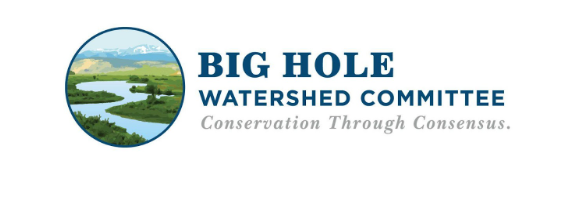Ripples of Change: The Impactful Work of the Big Hole Watershed Committee
The 1980s and early 1990s were a difficult time in the Big Hole River in SouthWest Montana, with drought, dwindling grayling populations, and rising tensions posing multiple challenges for communities. In 1994, six ranchers wrote a letter to the then-governor after touring with the Legislative Water Policy Committee to seek help addressing the river's problems. Their goal was to find positive actions instead of reacting to negative reports.
The ranchers who were dependent on the Big Hole and its tributaries for irrigation faced the hardships of prolonged drought and were filled with worries about the river's future. They knew the risk of restrictions on irrigation and fishing was on the table, and their plea for help emphasized the need for long-term, science-based solutions.
This period of uncertainty brought the Big Hole Watershed Committee (BHWC) to life. Water rights holders appointed representatives from different river stretches in 1995. Although there were conflicts initially due to different interests, the committee realized the significance of involving diverse voices, including water utilities, businesses, conservation districts, guides, local government, and sportsmen.

The BHWC achieved a milestone in 1997 by enacting the state's first Drought Management Plan, using voluntary participation to meet target river flows. Unfortunately, the conditions worsened in 2004, and the grayling was threatened with being listed under the Endangered Species Act. The BHWC navigated these challenges, collaborating with partners and advisors and eventually becoming a certified non-profit in 2005.
The BHWC initiated multiple projects to preserve the Big Hole River ecosystem, with the Drought Management Plan (DMP) and grayling recovery efforts standing out. The former plays a significant role in protecting the Big Hole River fishery during drought. This model coordinates conservation measures to set flow and water temperature targets on the Big Hole River.
The plan relies on voluntary conservation measures by river users, particularly irrigators, to prevent stress on fish during drought. If conditions worsen beyond voluntary targets, state-managed fishing restrictions are implemented. Doing so ensures the plan's effectiveness in preserving the river's delicate ecosystem.
The Arctic grayling recovery program, specifically called the Candidate Conservation Agreement with Assurances (CCAA), established in 2009, is just as important. It is worth noting that the Upper Big Hole River is the last location in the lower 48 states to host a naturally producing population of Arctic grayling. This initiative provides legal protections for landowners who enroll and participate, emphasizing the pivotal role of private landowner cooperation in grayling recovery.
Landowners enrolled in the CCAA program commit to site-specific plans, covering aspects such as riparian management, vegetation recovery, weed treatment, irrigation improvement, fish passage, and flow maintenance. These plans are monitored and results are reported annually. This ensures accountability and progress in the recovery efforts.
In 2022, conservation groups sued the US Fish and Wildlife Service (USFWS) for its past denial of Endangered Species Act protections for the Arctic grayling. This only shows the ongoing challenges and the need for continued grayling recovery in the Big Hole River. Active restoration of the landscape is part of these efforts, ensuring water availability for fish, wildlife, and people.
Included in the BHWC's ongoing projects are the Eastern Pioneers Low-tech Process-based Restoration (LTPBR), Mount Haggin Uplands/Anaconda Superfund, Elkhorn Mine Remediation, Wildlife Conflict Reduction, and more. Each project addresses specific aspects of watershed and habitat management, from infrastructure improvements to ecological restoration.
Pedro Marques, the executive director of the BHWC since 2019, brings a unique perspective to the organization. He has a Master of Science in Environmental Studies from the University of Montana, which equipped him with a diverse skill set in river ecology, international development, and agriculture. Starting as a consultant for watershed issues, Marques's involvement with the BHWC deepened, and he proceeded to do in-house work for the organization.
Now, the executive director continues the vision and mission of the ground-breaking grassroots organization. "The Big Hole Watershed Committee is the 'glue' that connects fisheries, biologists, agencies, land managers, private individuals, and other stakeholders. We aim to streamline projects so we can navigate through bureaucratic processes efficiently and deliver remarkable results. We recognize the fact that agencies are under capacity and that federal complexities must be considered. We're proud of our ability to keep all those in mind while aligning with the needs and preferences of the communities affected," Marques stated.
Ultimately, the BHWC remains dedicated to championing a holistic and sustainable approach to watershed management to ensure the excellent health and resilience of the Big Hole River ecosystem. The organization actively accepts private donations and seeks investments to continue its mission of turning conservation ideas into tangible, on-the-ground reality.
© Copyright IBTimes 2025. All rights reserved.





















